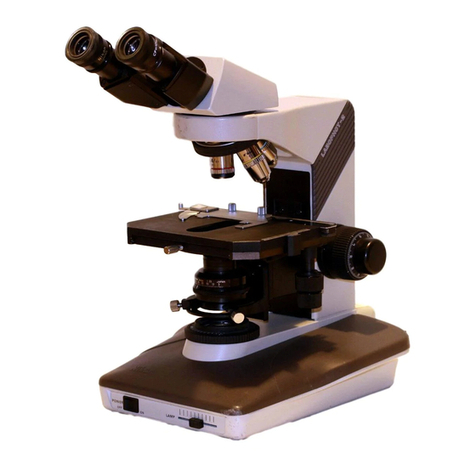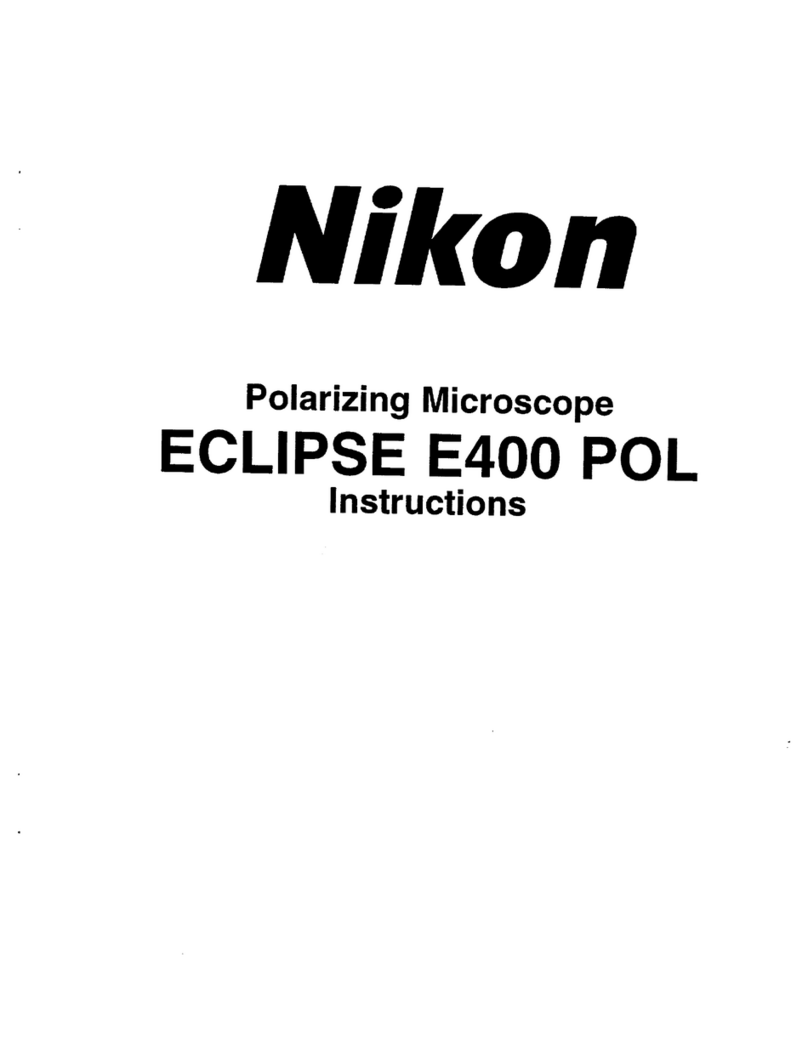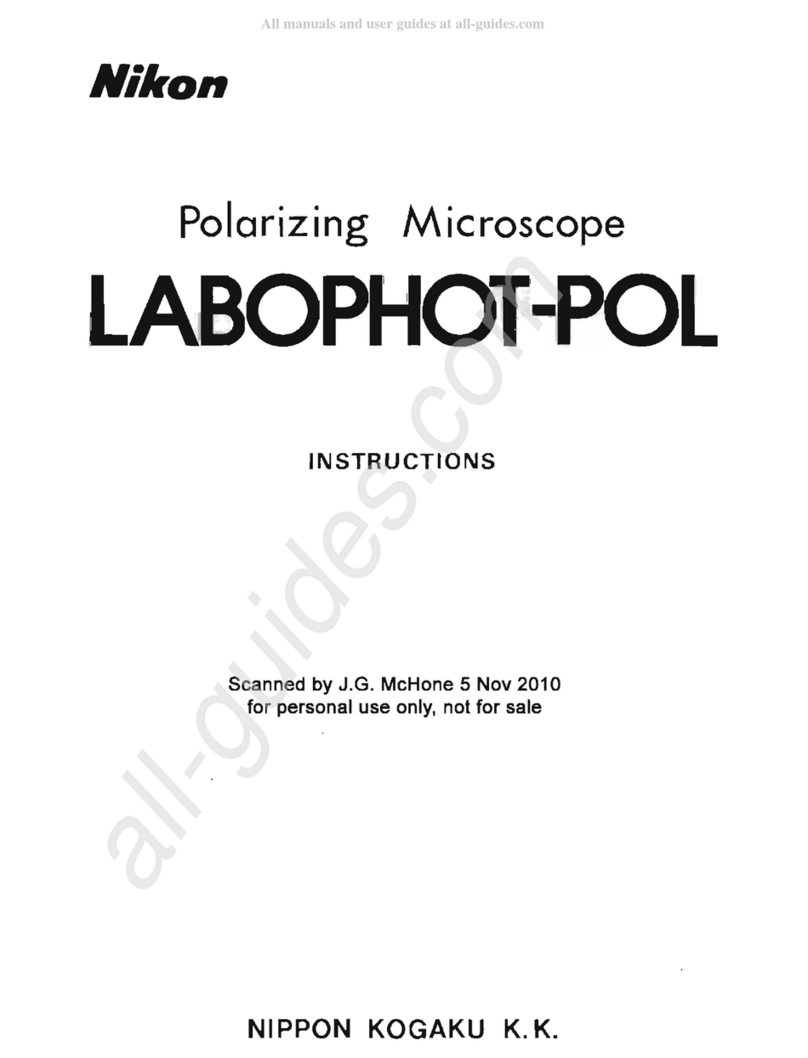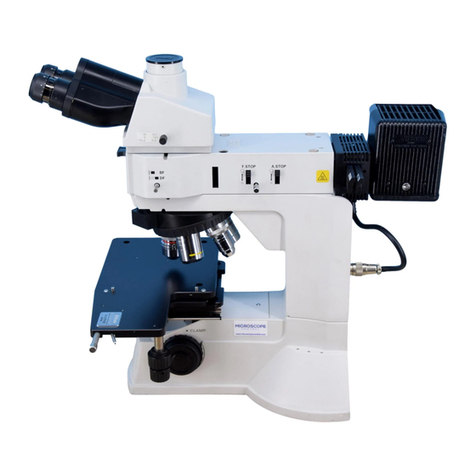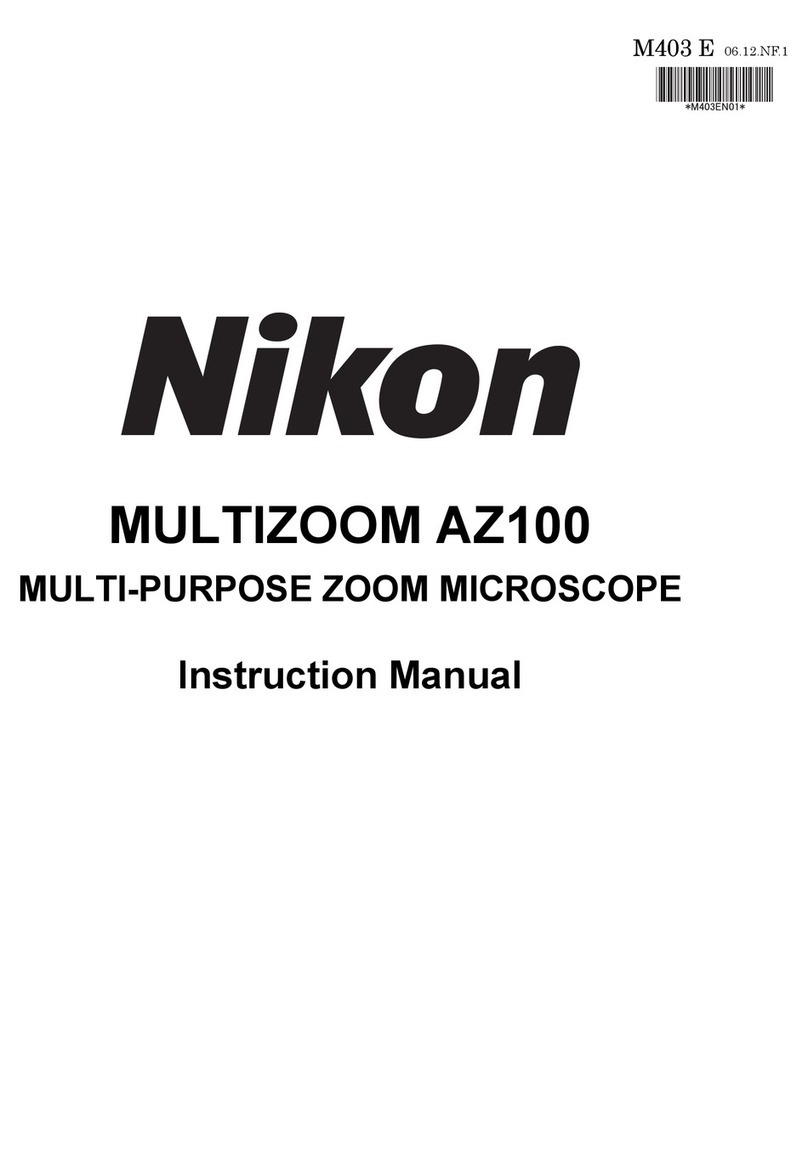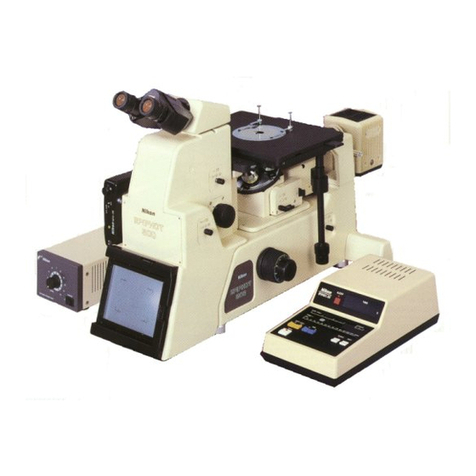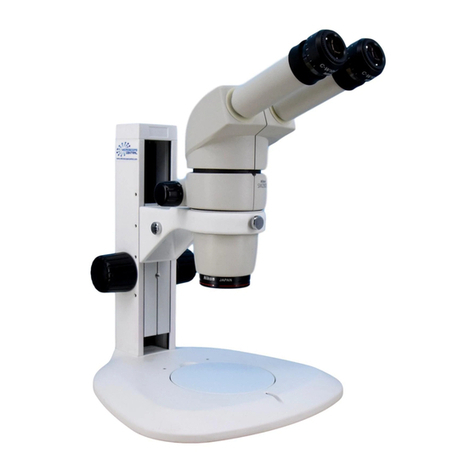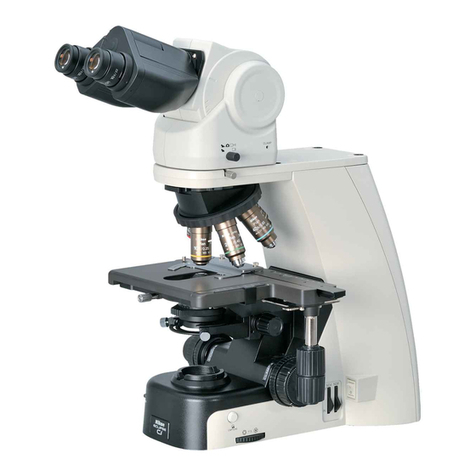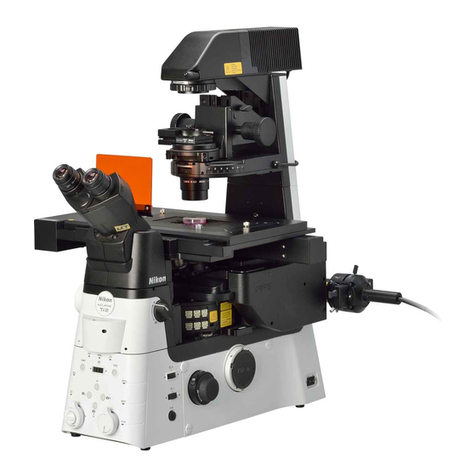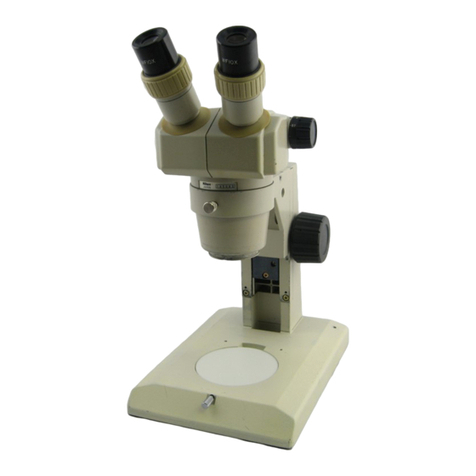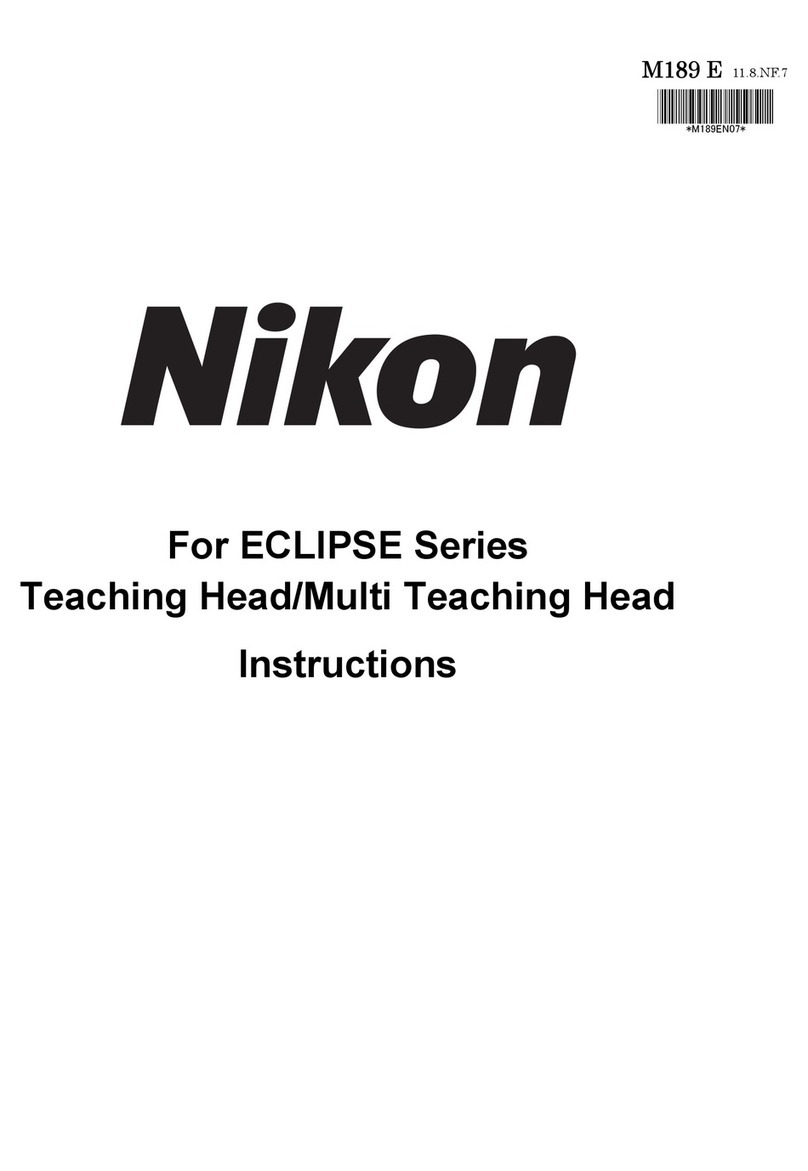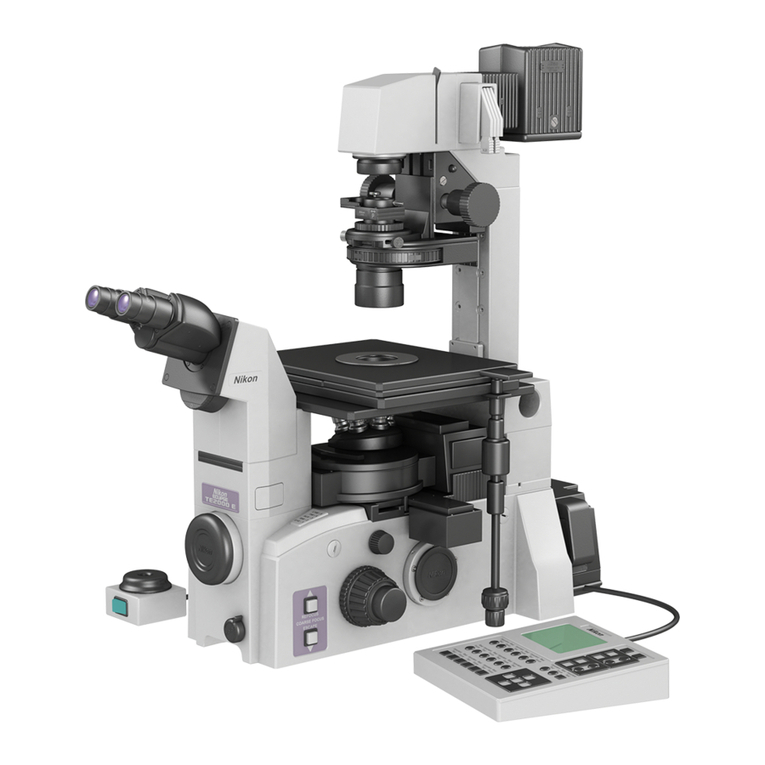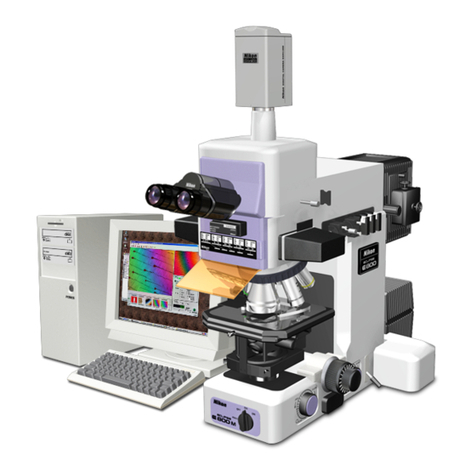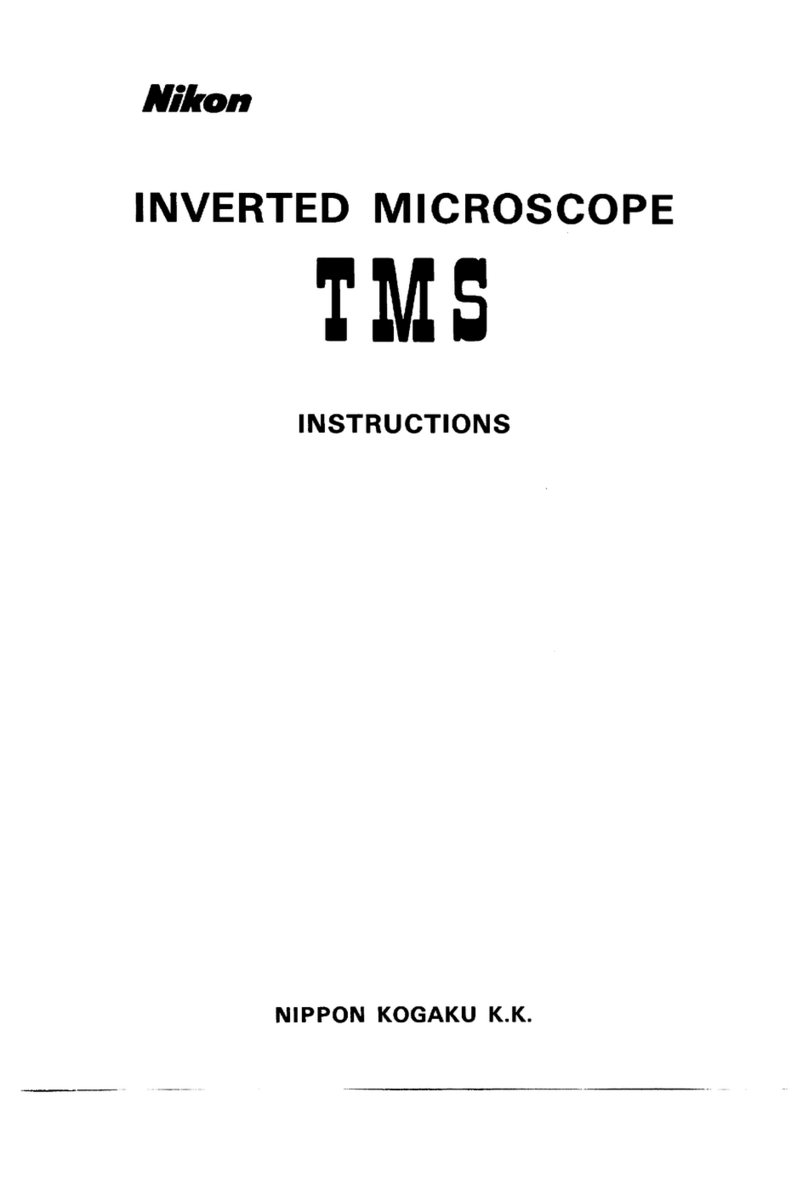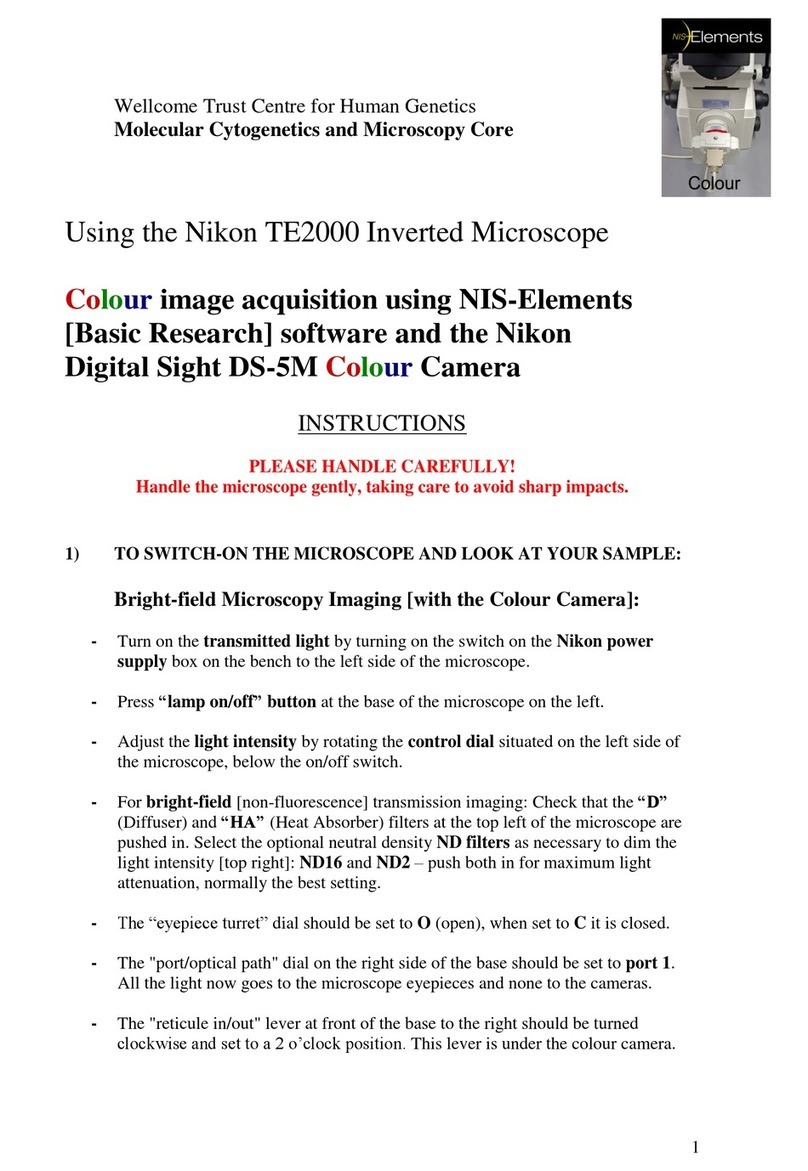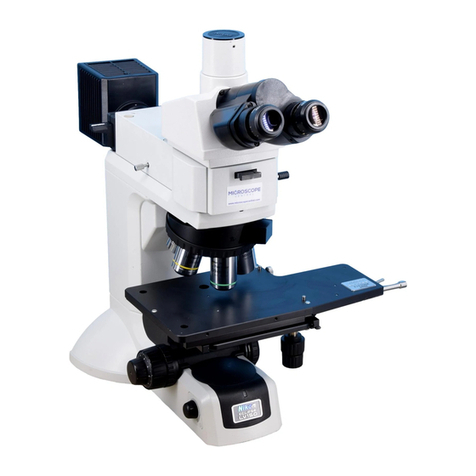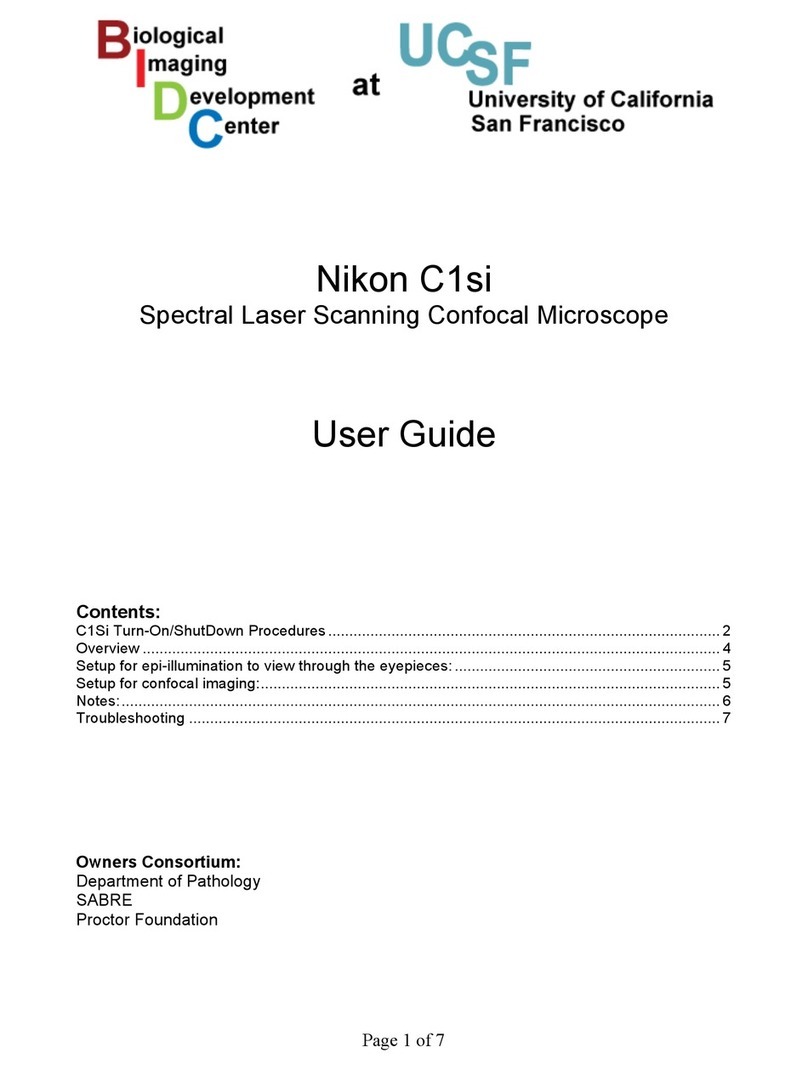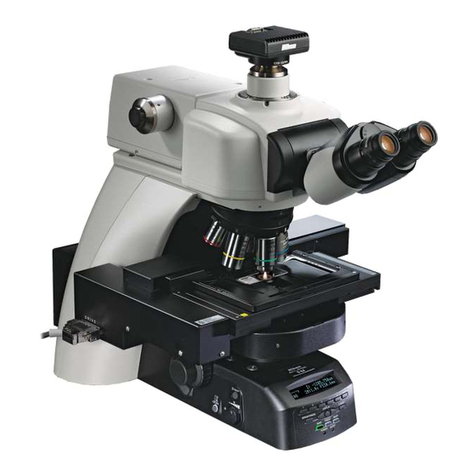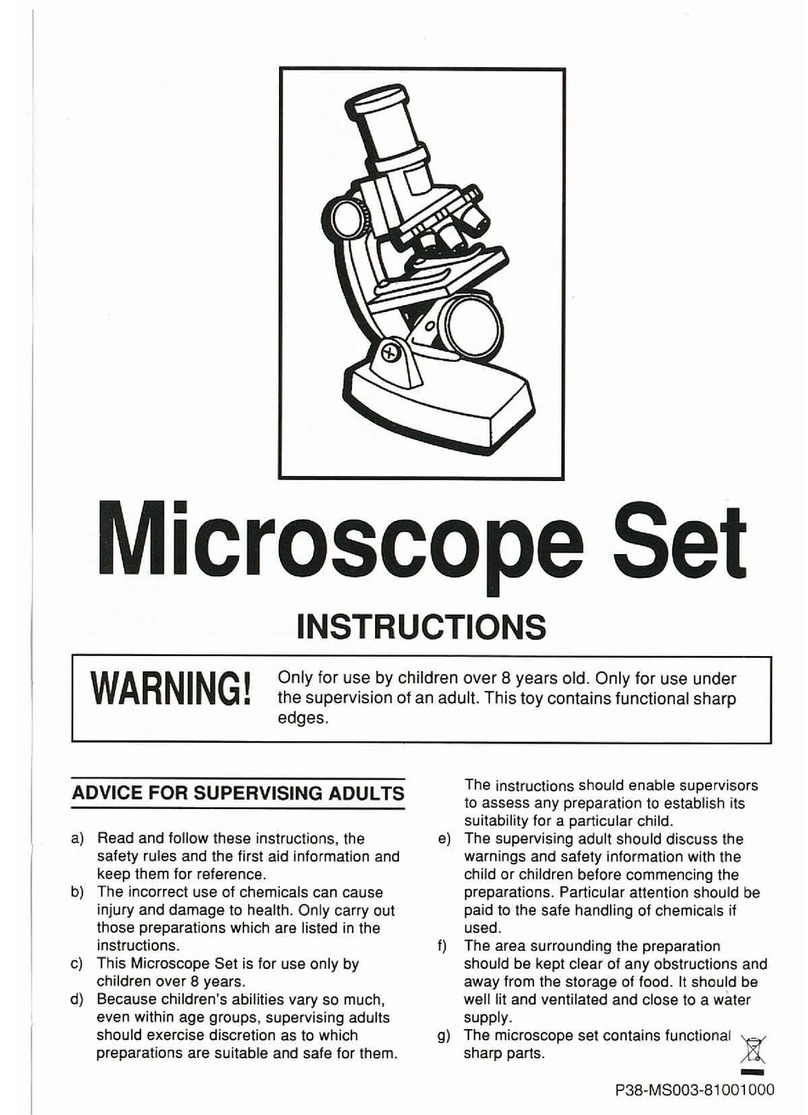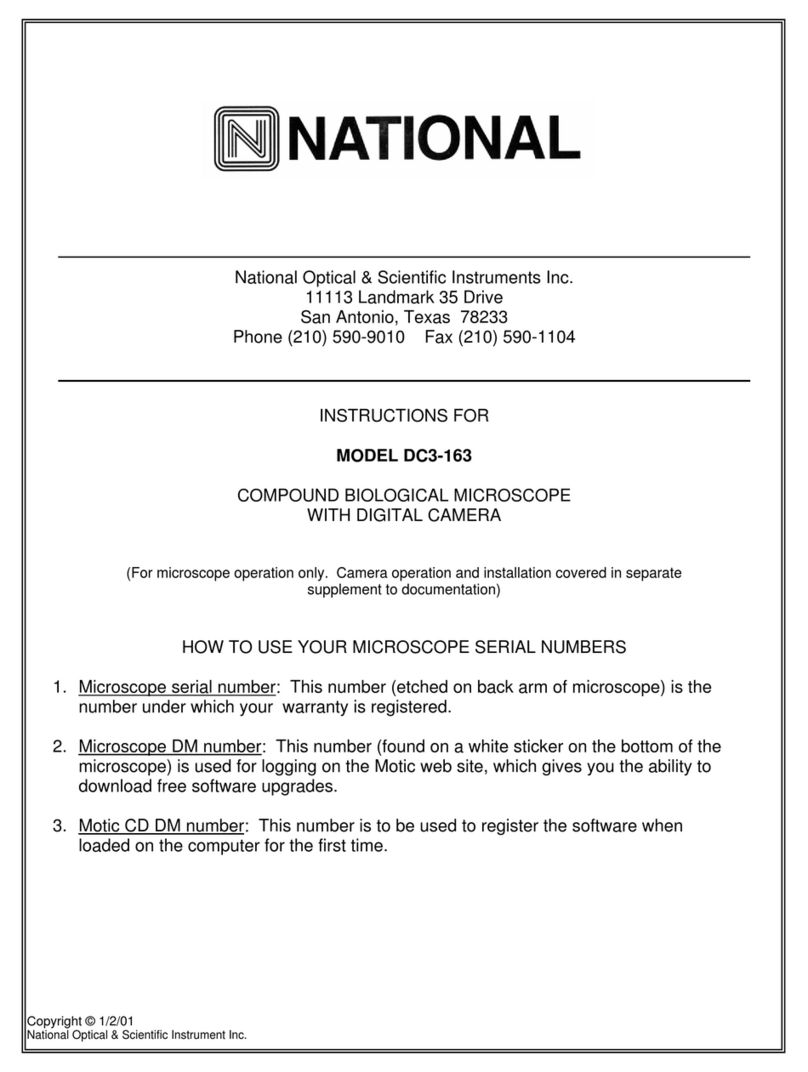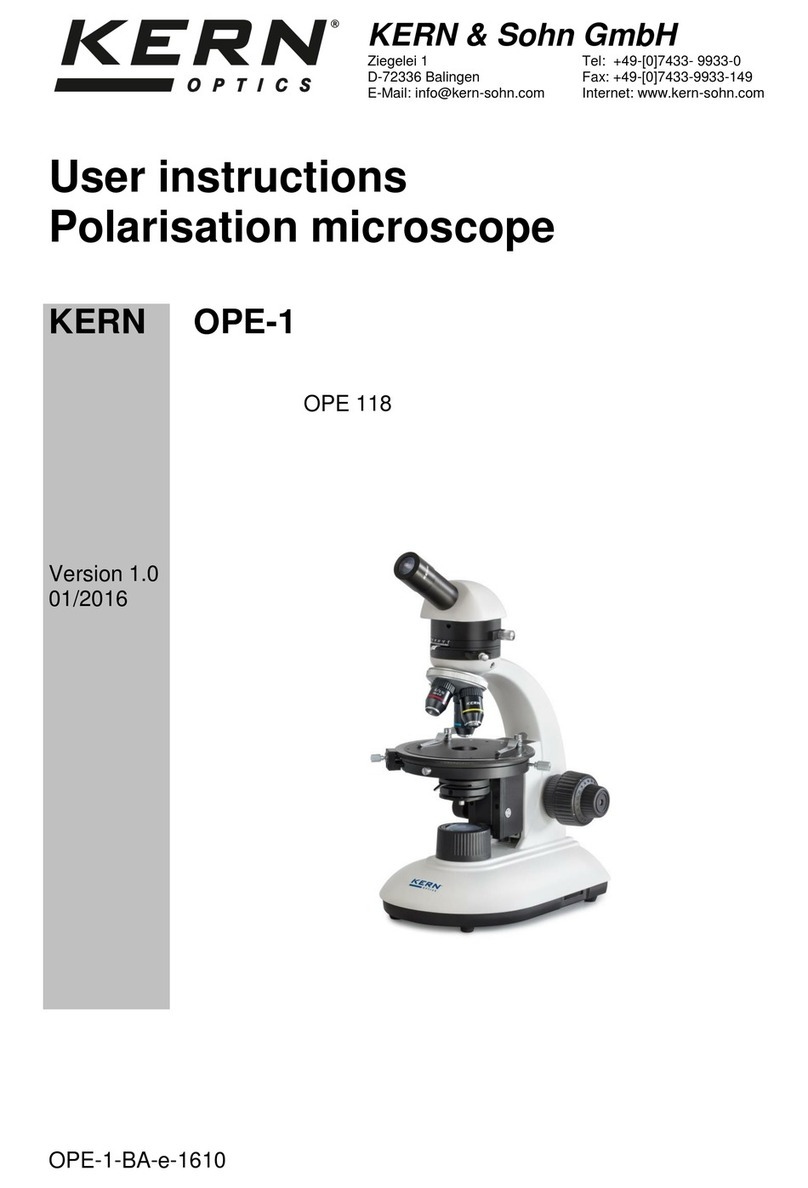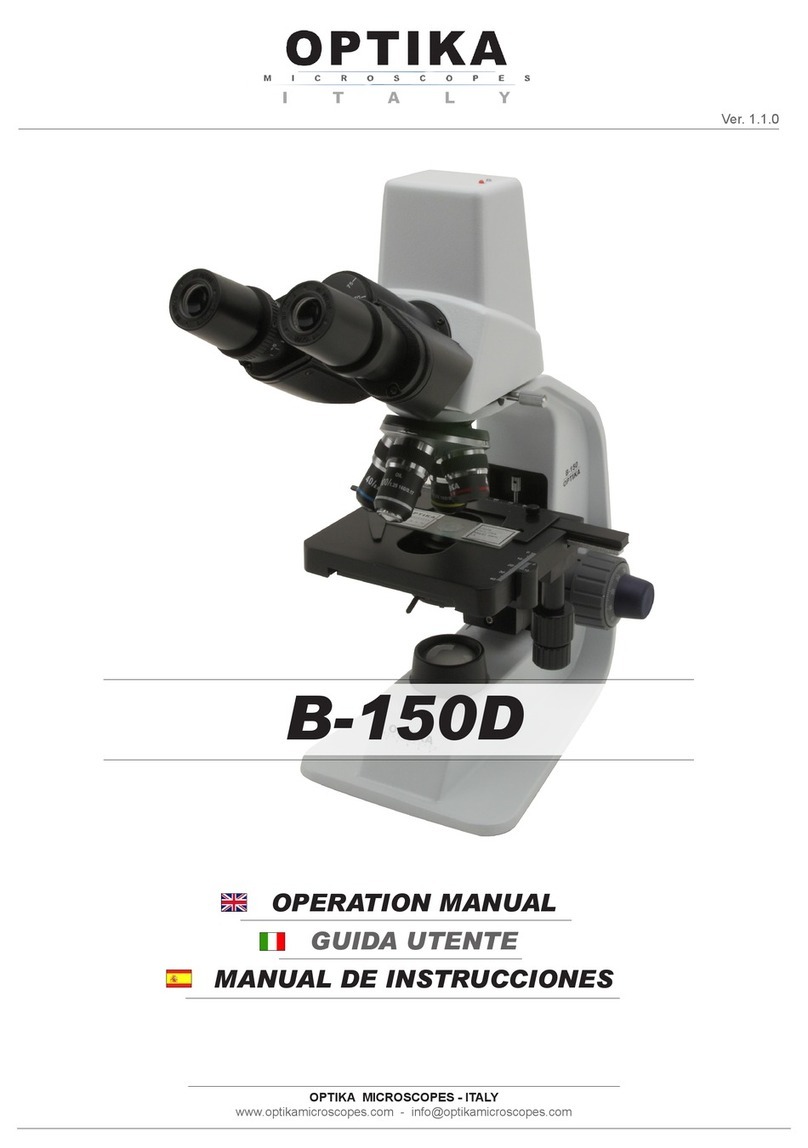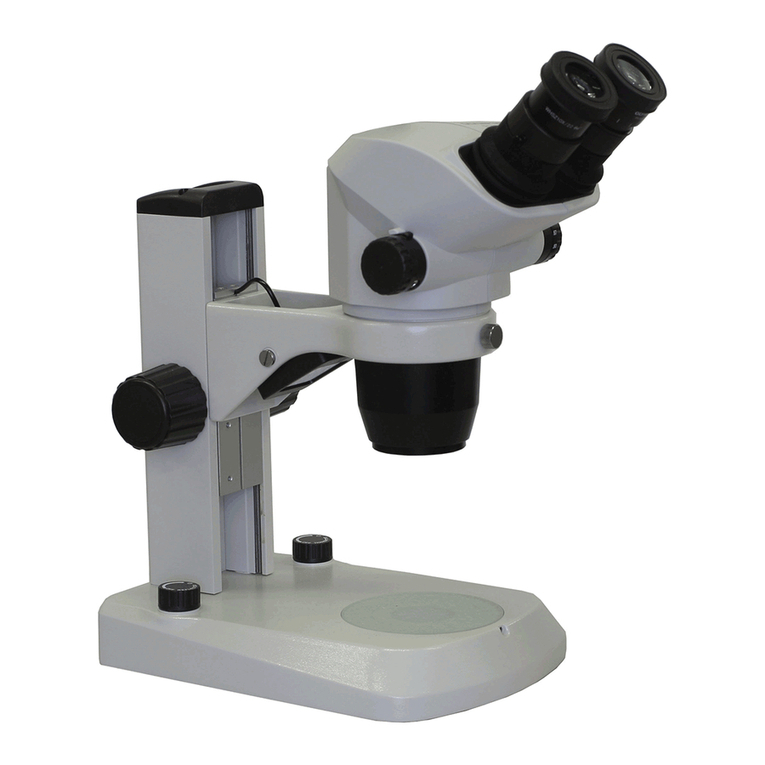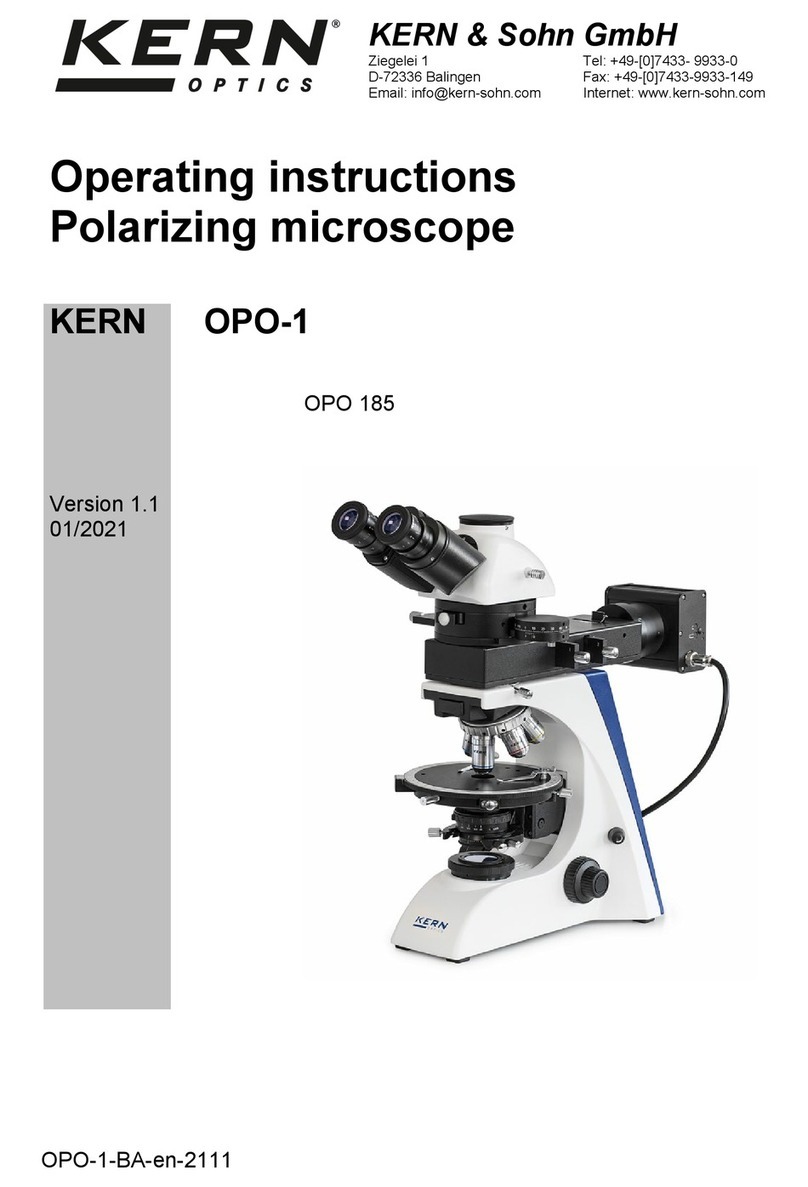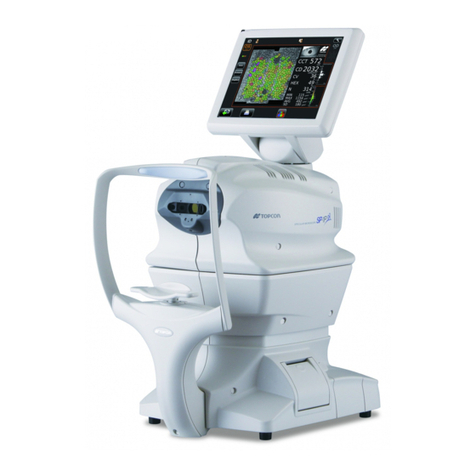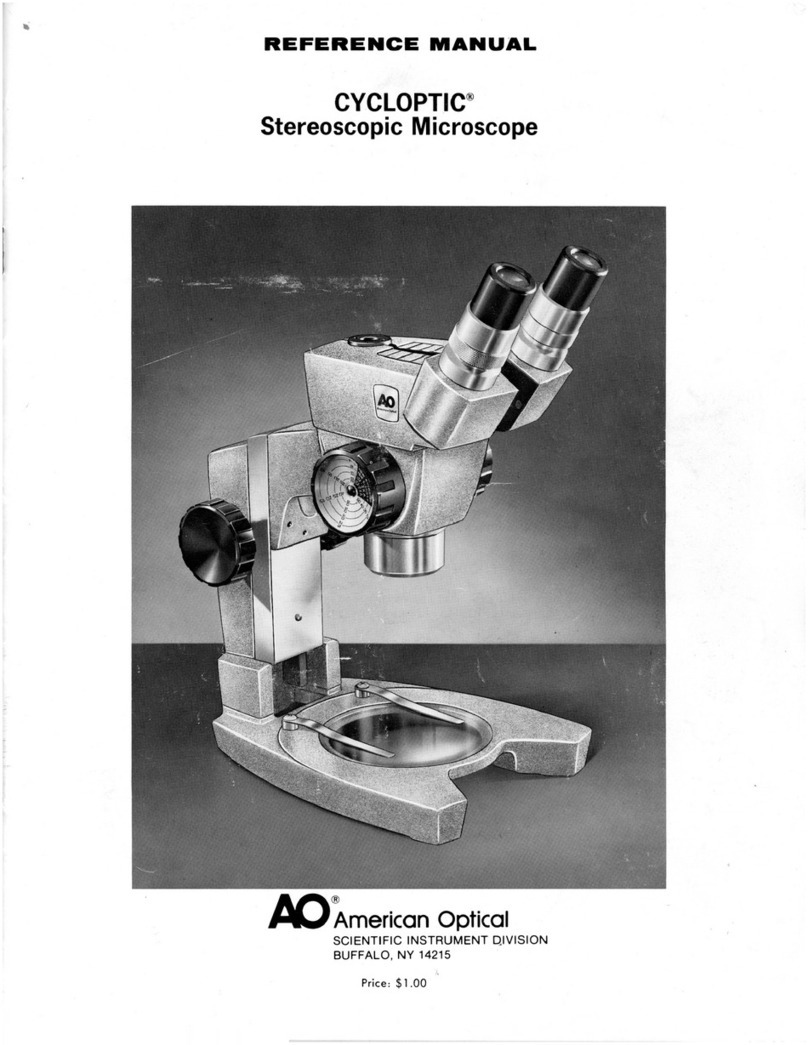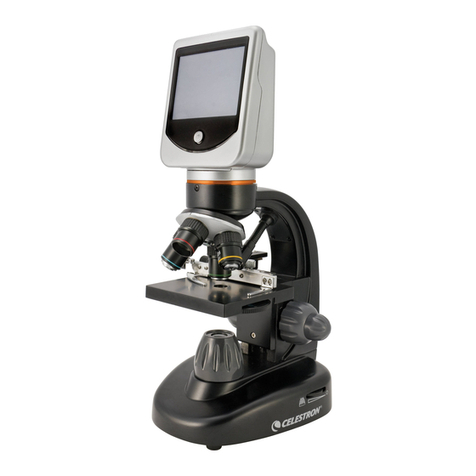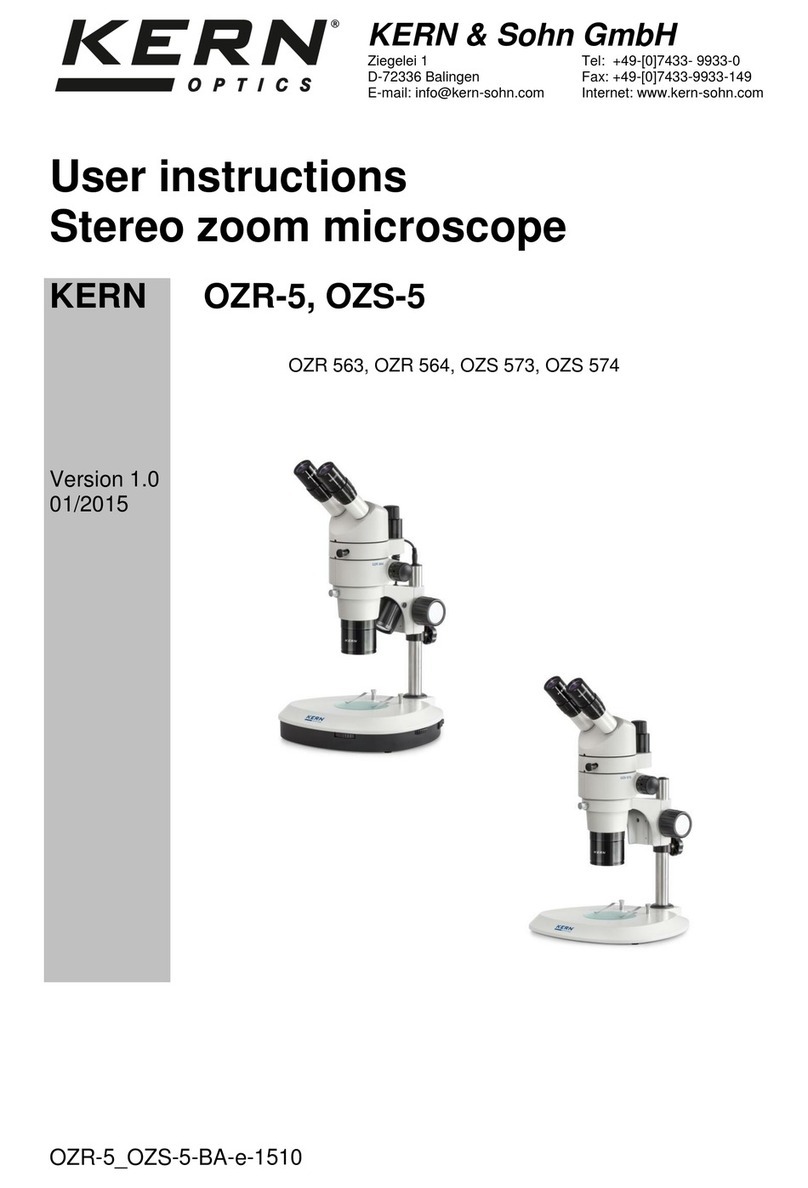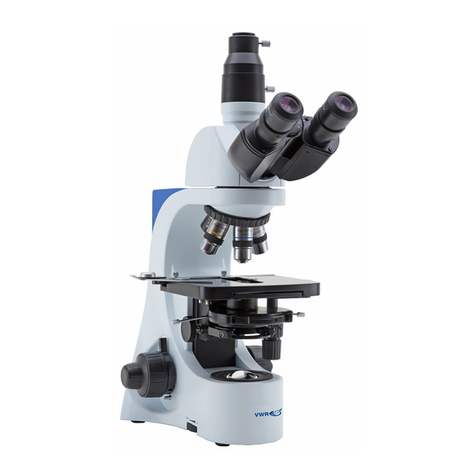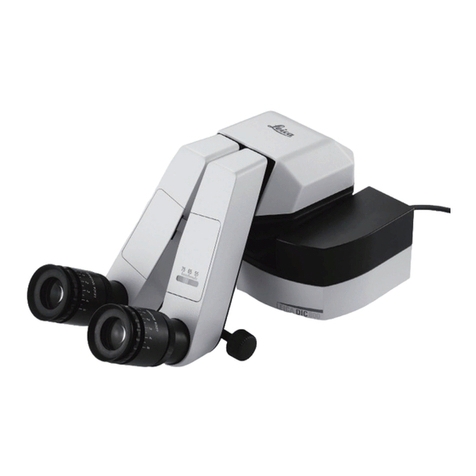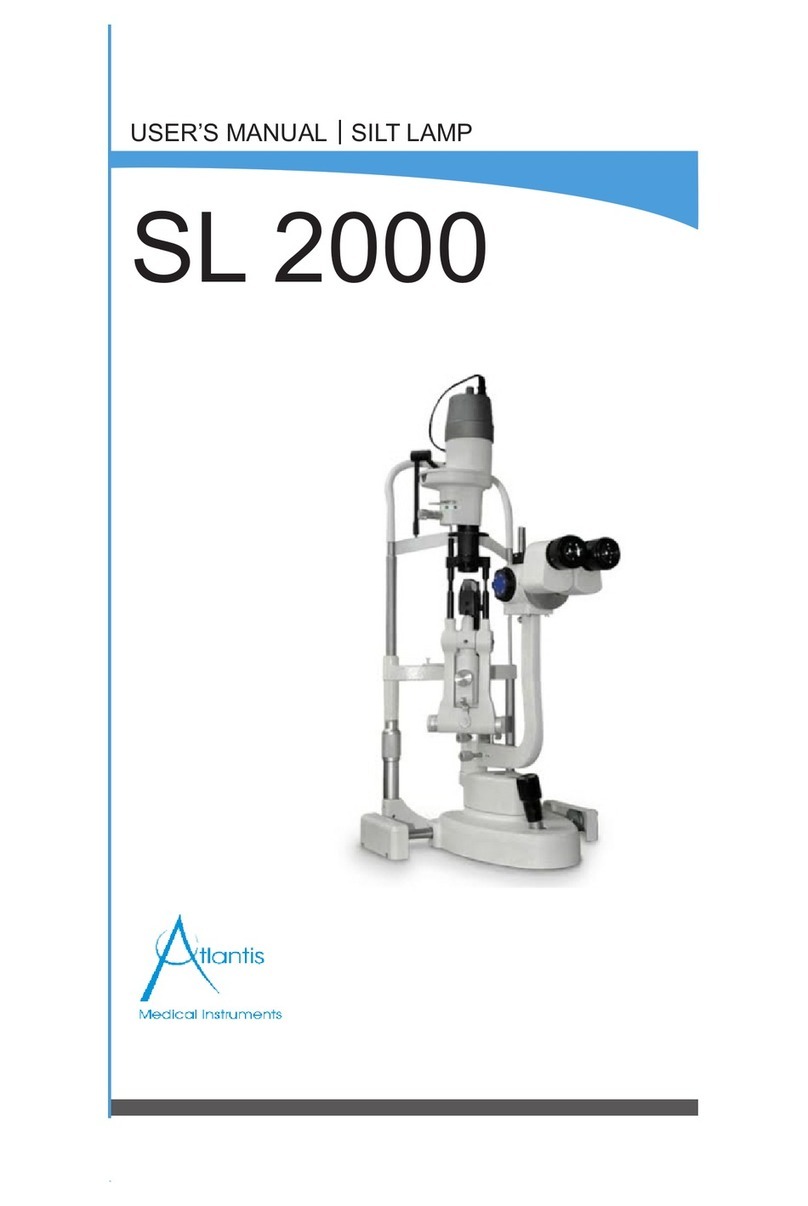
microscopesetupisabout
500—lOOOX
ofthenumericalapertureofthe
objectivetobeused.Notethatinphotomicrographyitisuselessto
raisethemagnificationbeyondtheresolvingpoweroftheemulsion
(usuallyabout
0.05mm).
However,
sincetheresolutionoftheemulsion
is
higherthanthatofthenakedeye,photographsareusuallytakenat
alowermagnificationandthereaftertheyareenlarged.
•
Realfieldofview(inmm)representstheextentoftheobjectthatcomes
underobservation.Inhighermagnificationitbecomesextremely
small.
Consequently,itisadvisabletotakeaimattheobjectpointtobeexa-
mined
firstunderlowermagnificationandthenrevolvethenosepieceto
highermagnification.
•
Whenfocusisonthecenterofthe
field,
itscircumferencewillusuallybe
blurred,
becausea curvatureoftheimageplaneisunavoidableinthe
microscope,exceptwhenusinga plantypeobjectives.Inordertoget
sharpcornerimage,itisnecessarytoadjustthefinefocusingknoband
switchthefocusfromthecenterontothecorners.
•
Depthoffocusrepresentsthethicknessorheightoftheobjectinfi sharply
seenwhenobservationismadethroughthemicroscope.Inphotomicrogra-
phythedepthoffocusbecomessmallerthanthefigureshowninthe
previoustable.Therefore,carefulattentionmustbemadeinfocusing
when
taking
microscopepictures.
Byclosingthecondenserdiaphragm,thedepthoffieldcanbemade
greaterthanthevalueshowninthetable.
4.
Condensers
Type
NumericalAperture Remarks
Abbe
1.30
Twolenses For centralillumination(withoutobliqueilluminationslider)
Abbe
1.30
Twolenses For centralandobliqueillumination(withoblique
illumi-
nation
slider)
Aplanatic
1.40
Three
lenses For high-classmicroscopy
Achromatic
1.25
Five
lenses For high-classmicroscopy
Achromatic
(longfocal-lengthtype)
0.7
Four
lenses Longfocal-lengthtype.Workingdistance12mm.With
turret-mounted
annulardiaphragmsforphase-contrastand
phase-interferencemicroscopy.
UniversalDark-Field
Condenser
1.20-1.40
for
dark-field
Suppliedincenterablemount.Withouterdiameter36.8
mm.
ObjectivestobeusedlOXupto
lOOX.
Ideallysuited
for
fluorescencework.
lOOX
objectiveusedshouldhave
built-in
adjustableirisdiaphragm.Thicknessofslideglass
to
beused,mustbelessthan
1.2mm.
Low-Power
Condenser
Singlelens For low-powermacro-objectives,e.g.,1.2X,2X,& 3X
PlanAchromatic
These
condensersarenotonlycapableofconcentratinglight-beamforbetter
illumination
oftheimage
field,
butalsogivesa greatinfluenceontheresolu-
tion
ofmicroscopeimage,imagecontrastanddepthoffocus.Inprecise
observationandphotomicrography,theuseofanachromaticoraplanatic
condenserwiththemaximumnumericalaperture1.25providedwithan
obliqueilluminationdeviceanda filtercaseisspeciallyrecommended.
—
9 —
ATTACHING
THELENSES
Beforeattachingtheobjectiveandtheeyepiecetothemicroscope,first
cleantheirouterlenssurfaces.
Even
a slightlystainedfingermarkmay
often
interferewiththeimagecontrast.
1.
Mounting
the
Objectives
Take
specialcareinhandlingtheobjectives.
Beforeattachingtheobjectivesonthenosepiecerevolver,lowerthe
microscopestagesufficiently.Securingeachobjectivewiththefingers
ofonehand,screwit
into
eachnosepiece
holewiththoseofthe
otherhand(Fig.4).
It
isrecommendedto
mount
theobjectives
onthenosepieceor-
derlyfromlowtohigh
powerssothatthe
magnification
ofeach
objectiveaugmentsas
the
revolverisrotated
clockwiseorcounter-
clockwise.
MicroscopeModelL-Kehasonitsuppersurfaceofthenosepiecerevolver
five
blankspots(Fig.5)oneachofwhichtheobjectivemagnificationcan
beInkedso
that,
by
looking
theseIndica-
tions
fromabove,the
objectivelocatedbelow
canbeidentified
with-
out
havingtoturn
away
your
eyes
from
the
eyepiece.
Whenrotatingthere-
volver,holditsouter
milled
rimwith
your
thumb
andfirstfinger,
but
donotpushthe
objectivebarrels,other-
wisealignmentofthe
objectivesmaybe
trou-
bled.
-10-

